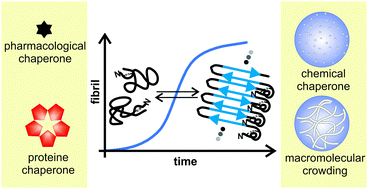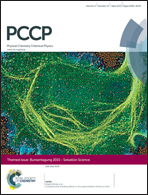Modulation of human IAPP fibrillation: cosolutes, crowders and chaperones
Abstract
The cellular environment determines the structure and function of proteins. Marginal changes of the environment can severely affect the energy landscape of protein folding. However, despite the important role of chaperones on protein folding, less is known about chaperonal modulation of protein aggregation and fibrillation considering different classes of chaperones. We find that the pharmacological chaperone O4, the chemical chaperone proline as well as the protein chaperone serum amyloid P component (SAP) are inhibitors of the type 2 diabetes mellitus-related aggregation process of islet amyloid polypeptide (IAPP). By applying biophysical methods such as thioflavin T fluorescence spectroscopy, fluorescence anisotropy, total reflection Fourier-transform infrared spectroscopy, circular dichroism spectroscopy and atomic force microscopy we analyse and compare their inhibition mechanism. We demonstrate that the fibrillation reaction of human IAPP is strongly inhibited by formation of globular, amorphous assemblies by both, the pharmacological and the protein chaperones. We studied the inhibition mechanism under cell-like conditions by using the artificial crowding agents Ficoll 70 and sucrose. Under such conditions the suppressive effect of proline was decreased, whereas the pharmacological chaperone remains active.

- This article is part of the themed collection: Bunsentagung 2015: Solvation Science

 Please wait while we load your content...
Please wait while we load your content...